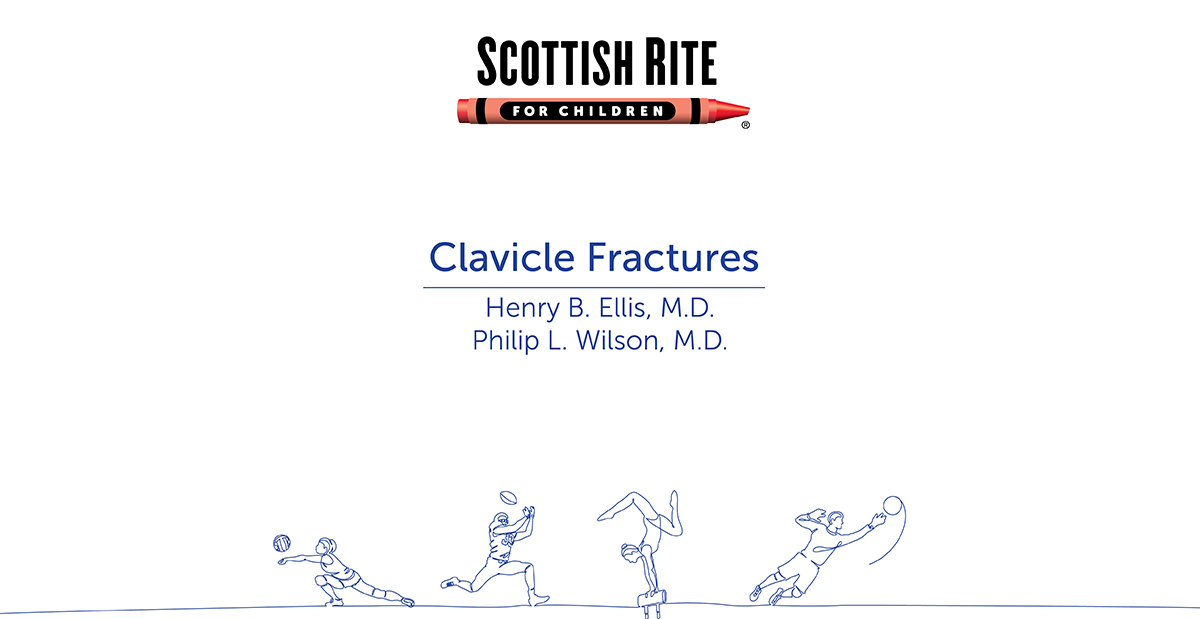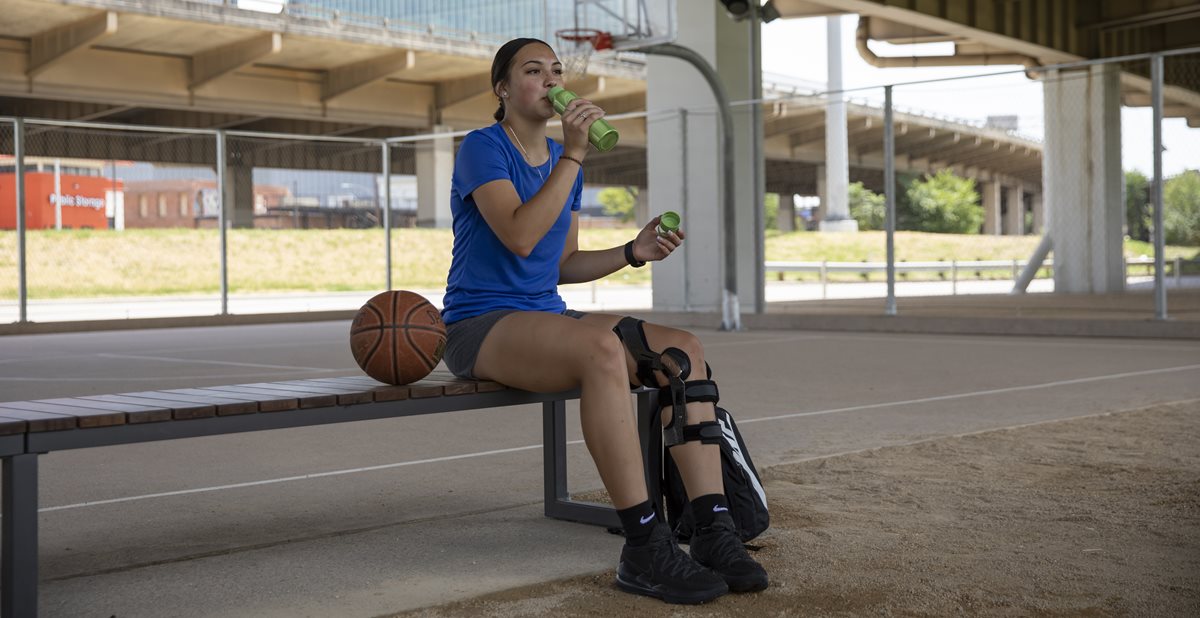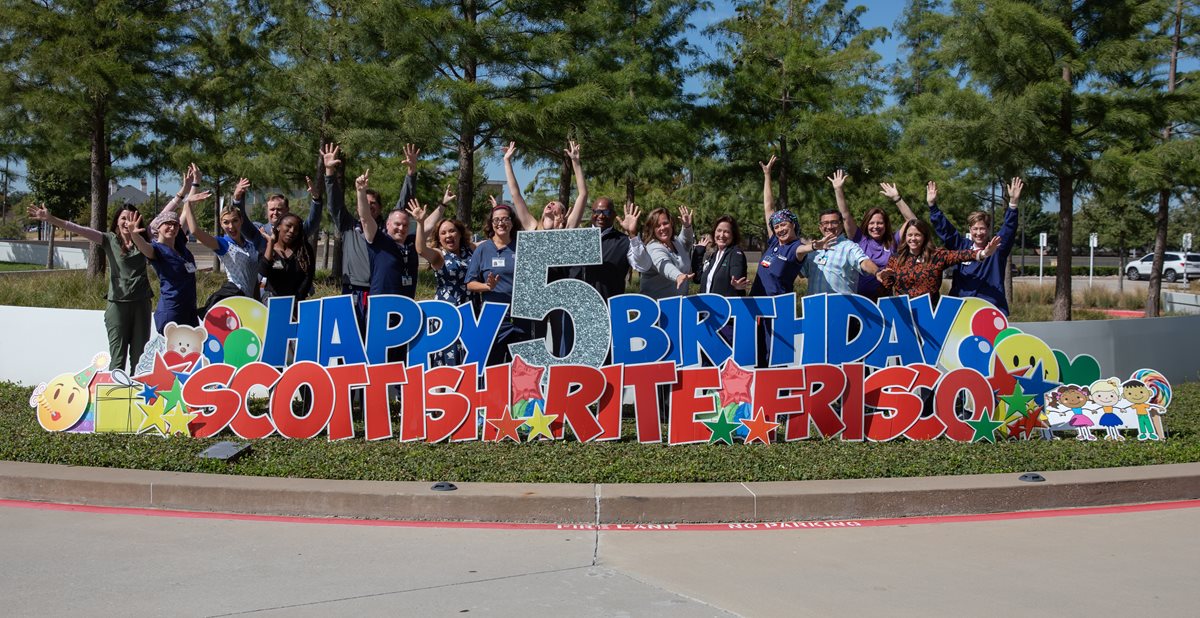
Feb 01, 2021 / Sports Medicine
What is a Clavicle Fracture?
The collarbone (clavicle) is the long bone that helps connect the breastbone (sternum) and the shoulder blade (scapula). A break (fracture) in the collarbone can occur in children of all ages.
How does a collarbone fracture occur?
A fractured collarbone typically happens after a fall or a direct impact to the shoulder.
Nonoperative treatment is successful for many collarbone fractures. Surgery may be necessary if the fracture puts any structures such as nerves or blood vessels at risk. In young adults, surgery is a common approach when the clavicle appears significantly shortened, but the evidence in older adolescents has been limited.
Henry B. Ellis, M.D., Philip L. Wilson, M.D., and other Scottish Rite for Children medical staff participated in a multi-center study to evaluate the outcomes of older adolescents, particularly, young athletes. Despite several studies suggesting the contrary in adult populations, excellent outcomes of severe clavicle fractures in adolescent athletes may be achieved with non-operative treatment. The study followed 137 adolescents (14-18 years) with mid-shaft clavicle fractures.
Associate director of research at Scottish Rite for Children and our site’s principle investigator for this study, Ellis says, “The work we do with multi-center groups, like the FACTS (Function after Adolescent Clavicle Trauma and Surgery) group has potential to positively influence care, outcomes and costs of pediatric orthopedic care throughout the country.” This study group includes members from Tennessee, Massachusetts, Georgia, California, Michigan and Missouri. Combining data from pediatric orthopedic centers across the country allows studies to draw more powerful conclusions in more specific subsets of patient populations. Wilson adds, “This is why Scottish Rite leads many multi-center studies in all areas of pediatric orthopedics.”
The study, “Operative Versus Non-Operative Treatment of Severely Shortened or Comminuted Clavicle Fractures in Older Adolescent Athletes: Results from a Prospective, Multicenter, Level 2 Cohort Study,” was presented at the Pediatric Research in Sports Medicine Society’s annual meeting.
How does a collarbone fracture occur?
A fractured collarbone typically happens after a fall or a direct impact to the shoulder.
- Falling onto an outstretched arm when playing sports such as football, baseball or lacrosse.
- While doing an activity when you could take a hard fall, like biking, skateboarding or snow skiing.
- Falling off of playground equipment.
- Falling or rolling out of a bed or crib.
- In a car collision or other accident.
- During baby’s delivery (travel through birth canal).
- Pain, swelling and/or bruising over the collarbone.
- Increased pain when trying to move the shoulder or arm.
- Guarding (not moving the arm) to prevent movement.
- A bulge or deformity at the site of the break.
- Slumping or sagging of the shoulder, on the injured side.
Nonoperative treatment is successful for many collarbone fractures. Surgery may be necessary if the fracture puts any structures such as nerves or blood vessels at risk. In young adults, surgery is a common approach when the clavicle appears significantly shortened, but the evidence in older adolescents has been limited.
Henry B. Ellis, M.D., Philip L. Wilson, M.D., and other Scottish Rite for Children medical staff participated in a multi-center study to evaluate the outcomes of older adolescents, particularly, young athletes. Despite several studies suggesting the contrary in adult populations, excellent outcomes of severe clavicle fractures in adolescent athletes may be achieved with non-operative treatment. The study followed 137 adolescents (14-18 years) with mid-shaft clavicle fractures.
Associate director of research at Scottish Rite for Children and our site’s principle investigator for this study, Ellis says, “The work we do with multi-center groups, like the FACTS (Function after Adolescent Clavicle Trauma and Surgery) group has potential to positively influence care, outcomes and costs of pediatric orthopedic care throughout the country.” This study group includes members from Tennessee, Massachusetts, Georgia, California, Michigan and Missouri. Combining data from pediatric orthopedic centers across the country allows studies to draw more powerful conclusions in more specific subsets of patient populations. Wilson adds, “This is why Scottish Rite leads many multi-center studies in all areas of pediatric orthopedics.”
The study, “Operative Versus Non-Operative Treatment of Severely Shortened or Comminuted Clavicle Fractures in Older Adolescent Athletes: Results from a Prospective, Multicenter, Level 2 Cohort Study,” was presented at the Pediatric Research in Sports Medicine Society’s annual meeting.



